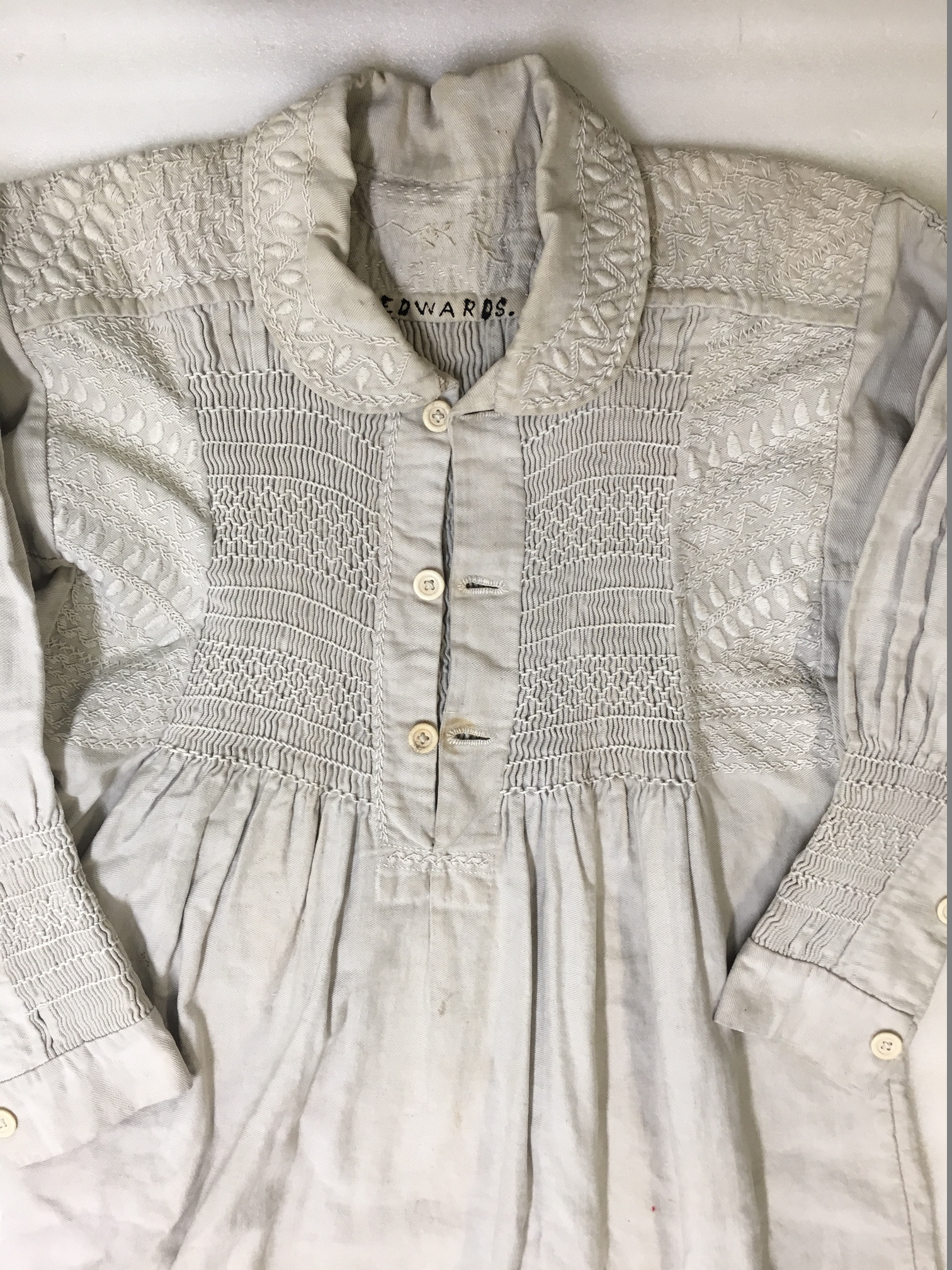“…stalwart ruddy men and boys, were dressed mainly in snow-white smock-frocks, embroidered upon the shoulders and breasts, in ornamental forms of hearts, diamonds, and zigzags…” From Under the Greenwood Tree by Thomas Hardy

This curious form of overall, known as the smock frock, was the standard work-wear for gardeners, labourers and many other rural workers in parts of eighteenth-century Europe. The smock frock was a protective outer-wear made from coarse linen or hemp. Dense panels of smocking (finely-pleated tubes of fabric, fixed into honey-comb patterns with a strong, decorative top-stitch) were usually built into areas of the garment that required the most protection.
This fine gardener’s smock-frock has smocked reinforcement panels atop the chest, wrists and back. It may seem unusual now for a snowy-white garment to be used in outdoor conditions, however white was the most common colour of smock frock through until the end of the nineteenth century.
Colour and decorative embroidery were not unusual however, and different areas became known for their own, distinct colour of smock. Different industries even adopted their own embroidered motifs, applied around the collar and shoulders especially, to represent their individual areas of work and provide additional padding to exposed areas. Wheel symbols were common decoration on the smocks of wagoners, as were leaf-shaped motifs on gardeners smocks such as this one.
While the provenance for this smock frock is a little unclear, its donor believed it was worn by the head gardener of an estate, possibly in Chichester, Sussex. Though rare in New Zealand museum collections, this example is one of a few smock frocks in our Textiles Collection.





